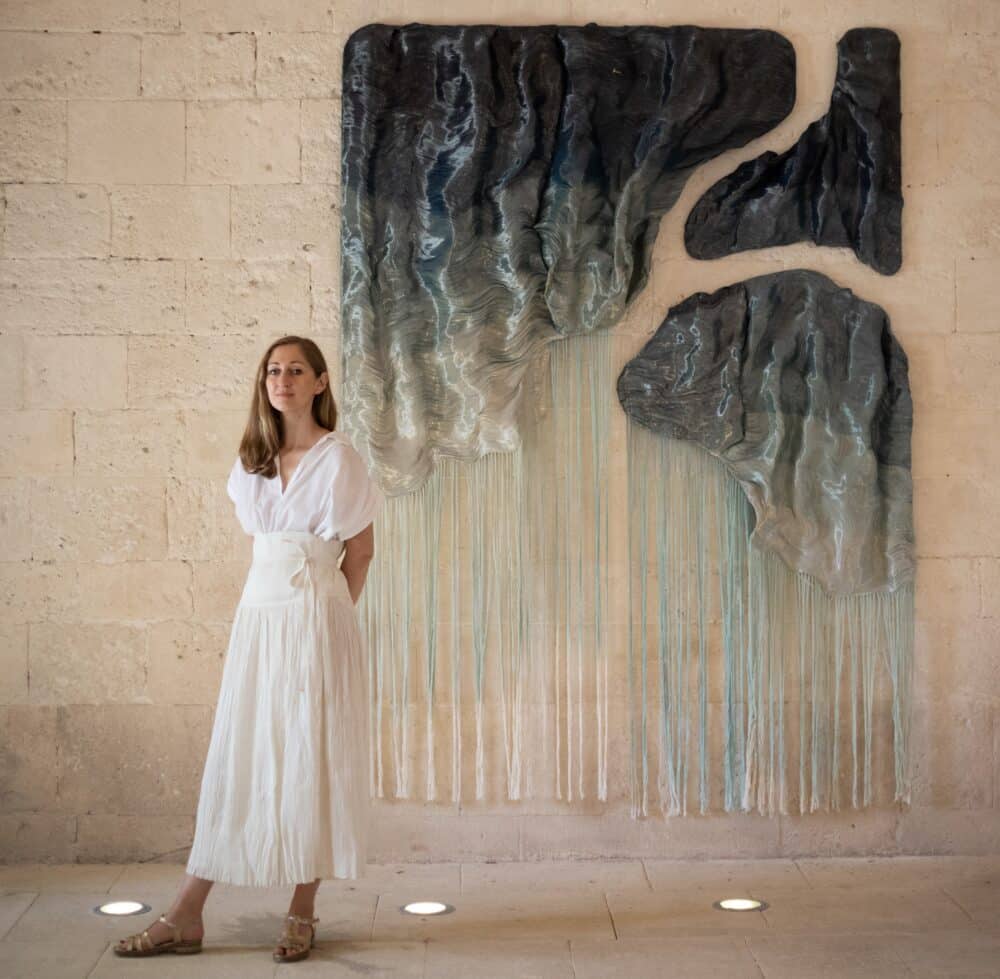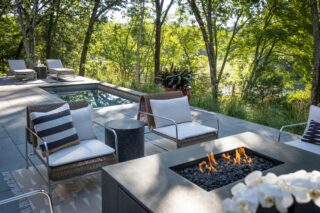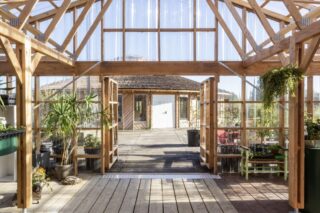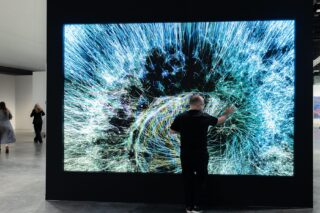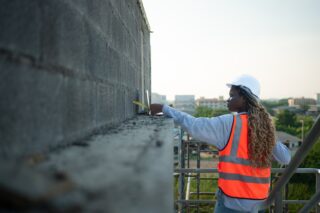In May, Morgane Baroghel Cruq will exhibit three new works at the Revelations trade fair at the Grand Palais in Paris. We sat down to talk about her work as an artist and textile artisan.
We met Morgane Baroghel Cruq, the textile artist and artisan, winner of the 30th Grand Prix de la Création of the City of Paris in 2023. She welcomed us into her workshop in Aix-en-Provence, where she weaves, imagines, and stages her artistic works. She fulfills prestigious commissions and is preparing for her next exhibition at the Révélations fair this coming May in Paris.
ArchiExpo e-Magazine: How does one become a weaver, designer, and textile artist?
Morgane Baroghel Cruq: I’ve always had a sensitivity to materials, growing up in a family environment where my mother and grandmother made everything with their hands. After studying Applied Arts, I joined ENSCI (École Nationale Supérieure de la Création Industrielle), where I discovered weaving. As soon as I started using the loom, I fell in love with it. I saw so many creative possibilities—exploration, discovery, and material research. That’s when I decided to dedicate my life to it.
ArchiExpo e-Magazine: You define yourself as an artisan, a textile designer—what characterizes your field of work?
Morgane Baroghel Cruq: Weaving is a very complex construction technique. The interlacing of threads creates fabric. At the fiber scale, there are infinite possibilities in terms of weaving, crossings, and material blends. I like incorporating materials that aren’t necessarily flexible. Any material can be woven—even, on a massive scale, tree branches.
I love hunting for threads from old factories. I work a lot with metal—steel, inox (stainless steel)—which I combine with silk. I’m drawn to the way materials shine when exposed to light.
Metal is something you can shape. I particularly love exploring volume. On a microscopic scale, it’s like 3D construction. This kind of work is what you see in the Swadoh lighting collection, which is exhibited in the U.S.
ArchiExpo e-Magazine: Are you represented in the United States?
Morgane Baroghel Cruq: Yes, it’s a continent where we’re seen as guardians of exceptional craftsmanship. Valérie Legras, my dedicated agent there, created the Swadoh lighting brand to showcase French artisans. In our collaboration, Valérie designs and I highlight my materials. These are woven pieces combining silk and brass. The lights are unique pieces, like the Selene collection.
Valérie will also exhibit my work at the ICFF fair in New York, from May 18 to 20, 2025. She also handles my commissioned pieces for architects and hotels.
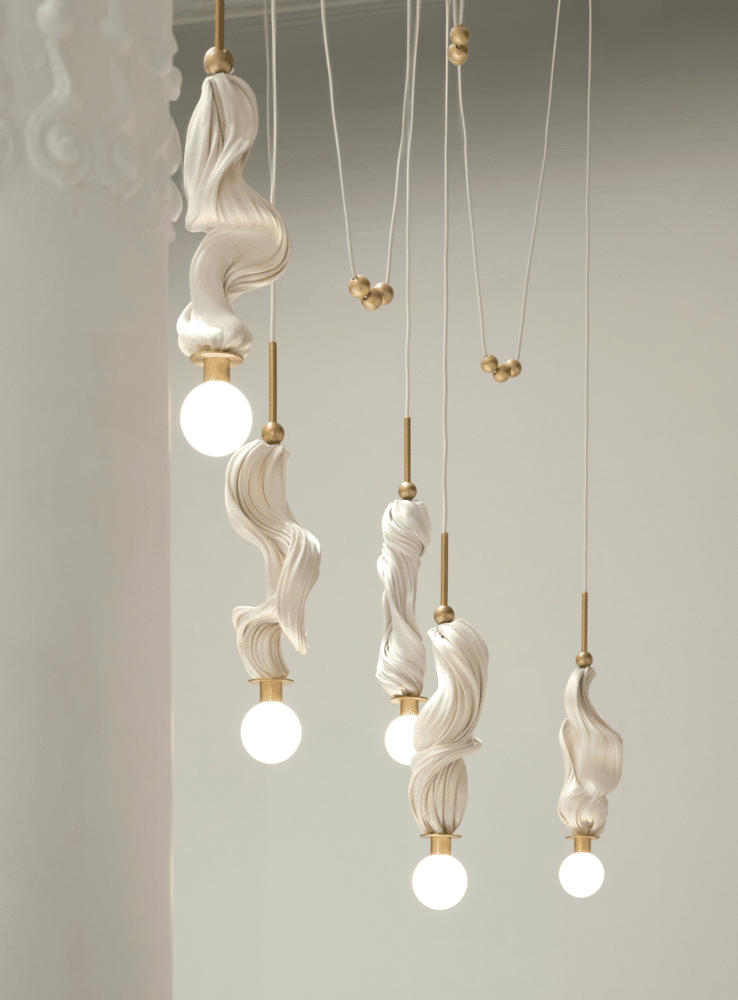
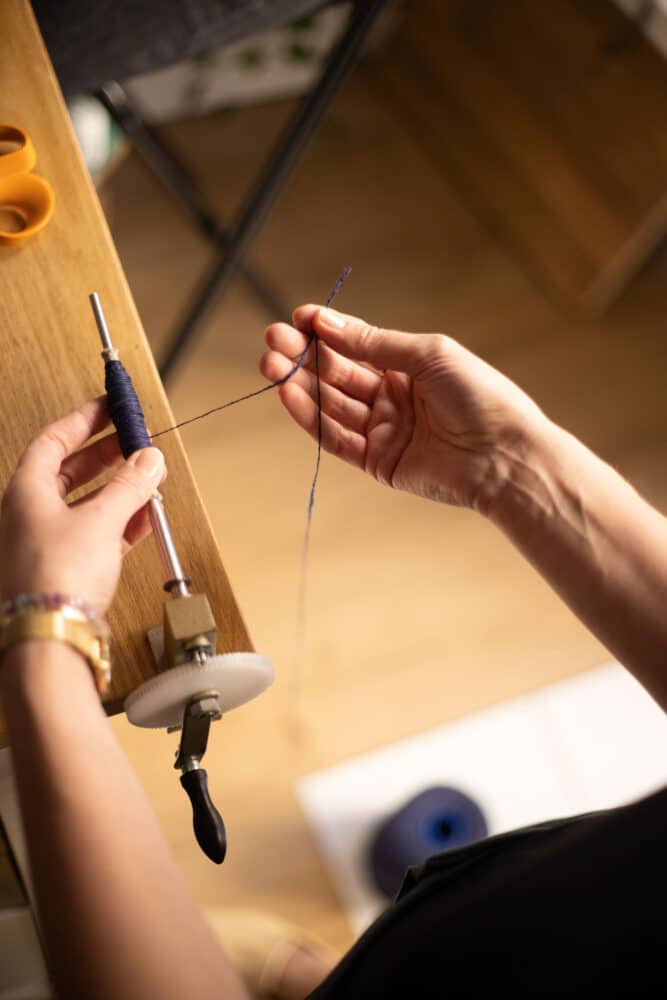
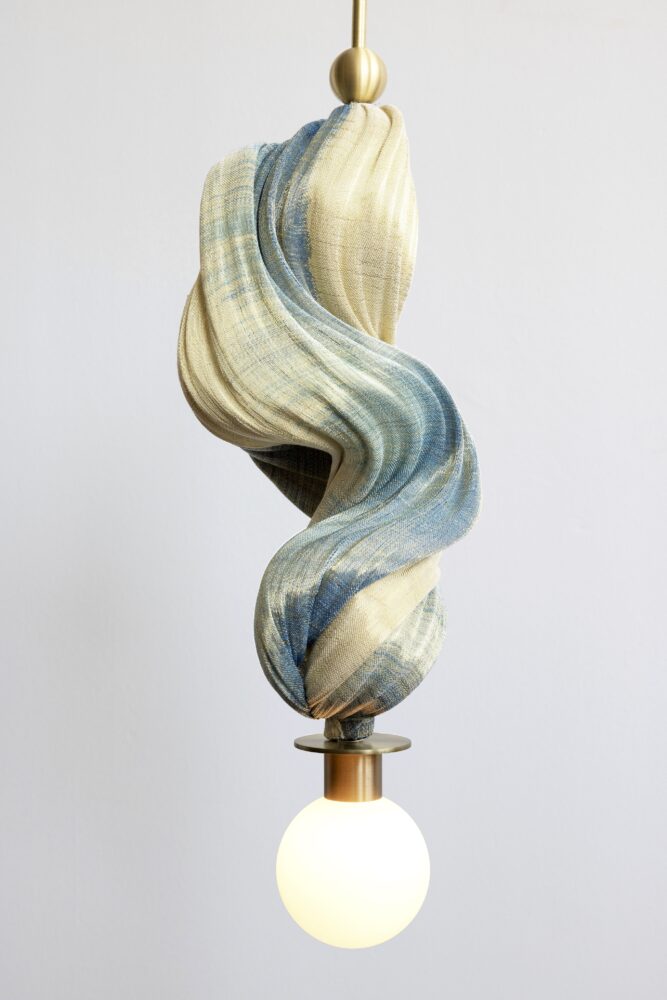
ArchiExpo e-Magazine: How do you give depth to your creations in the Swadoh collection?
Morgane Baroghel Cruq: I dip the woven material in indigo baths, for example. When metal is combined with silk, it brings relief and brilliance. It’s during the drying process that I breathe artistic shapes into the material—I shape, twist, and sculpt it into unique lighting pieces with unexpected forms.
ArchiExpo e-Magazine: Tell us about your projects for 2025.
Morgane Baroghel Cruq: From May 21 to 25, I’ll exhibit three works at the Révélations fair, one of which is two meters by two meters—monumental in the context of thread work. It’s our biggest project so far, requiring fifty days of weaving. The piece, made of silk and stainless steel, will be woven using naturally dyed threads by an artisan dyer. These are reclaimed silk and linen threads from old factories.
At the fair, I’ll also be presenting a collaboration with an artist who works with stone and furniture.
In Dinard, Brittany, I’ll soon be showing my work in the showroom of designer-artist Jean-Luc Le Mounier.
ArchiExpo e-Magazine: Regionally, you’re also exhibiting at the Galiffet Art Center in Aix-en-Provence, where you’ve been the curator for three years.
Morgane Baroghel Cruq: For the January 2025 exhibition, I selected 16 artist-artisans with incredible creative energy. I design and stage the works. All forms of craftsmanship are represented. It’s a space for openness—prize-winning works like the Bettencourt Prize share the stage with lesser-known pieces.
ArchiExpo e-Magazine: You’ll also be part of an exhibition in Vietnam, right?
Morgane Baroghel Cruq: Yes, in June, in Hạ Long Bay, Hanoi, I’ll be part of a group of around ten female artists.
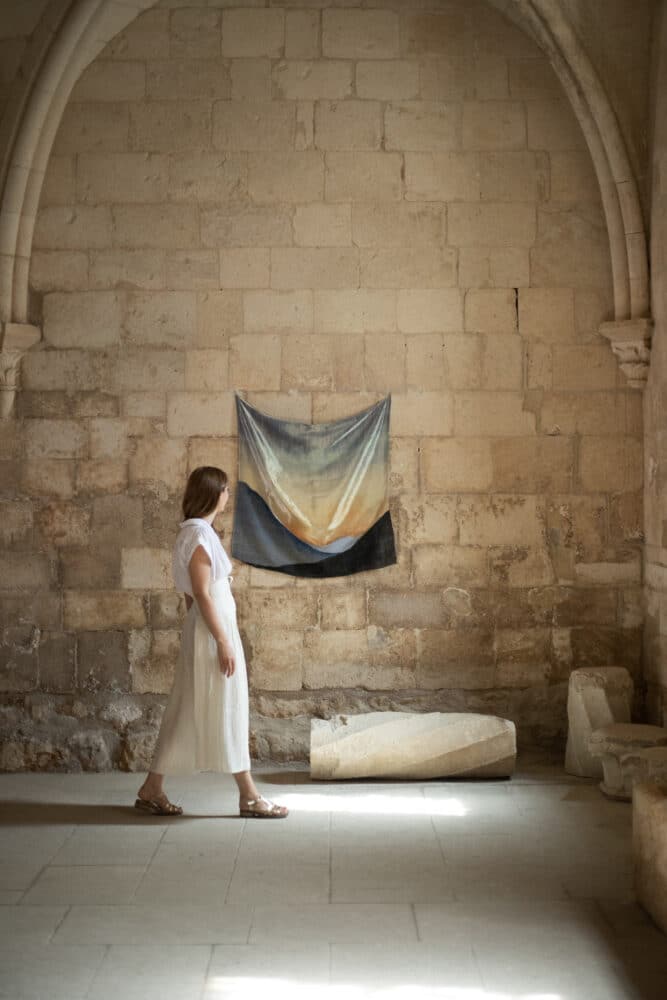
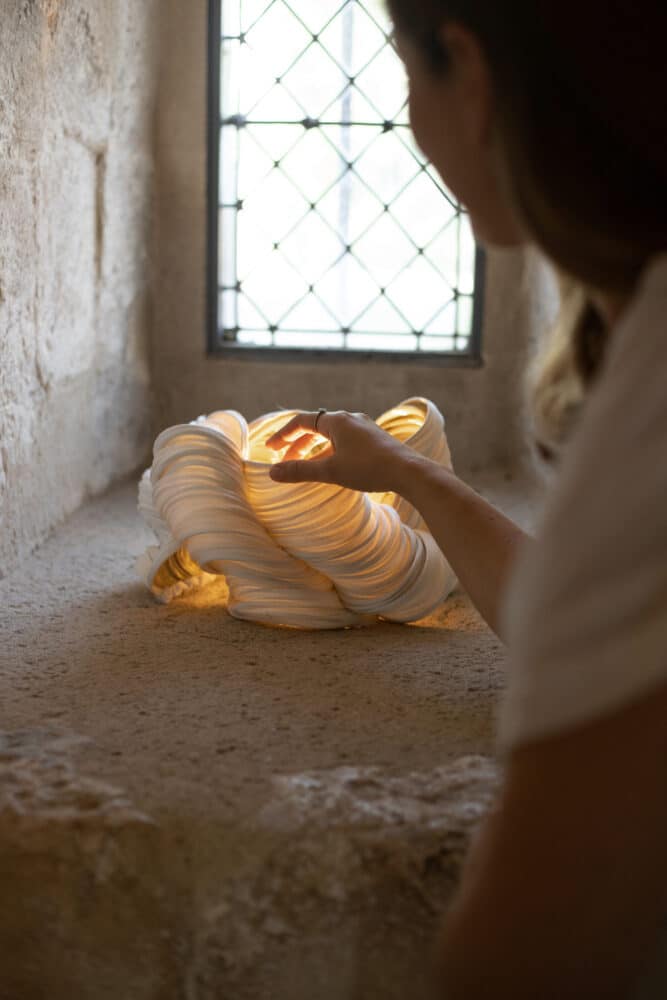
ArchiExpo e-Magazine: Has your artistic approach evolved?
Morgane Baroghel Cruq: I’m now pursuing a more meaningful practice. I love the idea of creating handmade objects that can’t be reproduced. I make artistic works using artisanal methods. I’m leaning more toward personal creations rather than commissioned work.
ArchiExpo e-Magazine: What sets you apart from a designer?
Morgane Baroghel Cruq: A designer envisions a functional object and sends the design to the artisan. An artist has broader creative freedom. In my studio, I’m searching for meaning. Today, I’m producing more personal pieces—like textile paintings—with an artistic approach.
ArchiExpo e-Magazine: You blend landscape and weaving—can you explain that?
Morgane Baroghel Cruq: Studying a weave can reveal the landscape surrounding the weaver. Just like Indigenous peoples who used local materials. I weave vegetal, mineral, and animal elements. I work with light, the colors of the surrounding landscapes, and identity. I love the interplay between material and light—each enhances the other. Provence is full of surprising tones, from the ochres of the soil to the blue sky. It’s very contemplative. You won’t find any human trace in what I do.
ArchiExpo e-Magazine: Your career has been marked by numerous awards—what have they brought you?
Morgane Baroghel Cruq: In 2015, I won the Young Creative Craftsmanship Prize in France. It was a real stepping stone, bringing attention to my work and giving me great visibility at the Révélations and Maison & Objet fairs. In 2016, I was awarded a grant from the Banque Populaire Foundation, which supports us for three years, trains us as entrepreneurs, and provides funding. It gave me real legitimacy and brought clients. Today, I serve on the jury for this wonderful foundation.
ArchiExpo e-Magazine: And in 2019?
Morgane Baroghel Cruq: Thanks to the Hermès Foundation’s Academy of Craftsmanship, which values collective intelligence, I spent a year immersed in an environment with artists, designers, and engineers—discovering new skills and extraordinary places. That’s when I realized I wanted to focus on art—to show through complete works rather than textile samples.
ArchiExpo e-Magazine: Beyond visibility, what do these awards lead to?
Morgane Baroghel Cruq: They open the door to amazing encounters and collaborations. There are so few of us in this profession. We also share our struggles. There’s strength in unity. We all share the same passion, each with her own skills, craftsmanship, and creative vision.
ArchiExpo e-Magazine: Aside from the artistic side, how do you differ from the textile industry?
Morgane Baroghel Cruq: My materials can’t be reproduced on an industrial scale. In the studio, when I weave, I use the energy of my body—my arms and legs. I don’t pollute. Making things by hand slowly brings back appreciation for lost crafts and skills. It’s quite magical to watch someone create something from just thread and a small tool.
